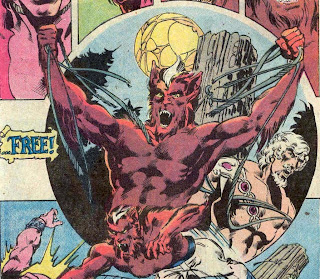This weekend, I finally got a chance to see Studio Ghibli’s Tales of Earthsea on blu-ray. As the name implies, it's loosely based on characters and concepts from Ursula Le Guin’s Earthsea series. The plot, however, is not one found in any of her stories, rather it seems inspired by various incidents in the books.
My short review: it’s disappointing--though to say so feels a little unfair, even though its true. The animation is topnotch, though there isn’t really a moment where it soars (though maybe this is due to watching a film animated in 2006 in 2011--maybe standards have advanced). Princess Mononoke and Spirited Away had visual moments I hadn’t seen before, but I didn’t feel like that was true here. The story, likewise, was a serviceable fantasy tale, but felt generic and not particularly Earthsea-ish.
Indeed, Ursula Le Guin had some problems with it. Some of that’s to be expected--seeing your work taken apart and reconfigured in a form not of your making must be difficult. Then there’s the issue of the skin color of the characters which greatly bothered her in SyFy’s Earthsea mini, and bothers her a bit here.
I will say they tried more than SyFy did. The people of Earthsea still appear Caucasian (mostly) but largely in a sort of Mediterranean context (skintone and material culture), which I guess is better than making them all Nordic types. Also, there's the fact that most anime characters tend to look Caucasian to American/European eyes, even though the Japanese presumably don't see them that way. Still, once the action moves away from the coast, touches like eyes painted on the bows of ships fade way, and we’re left with generic Fantasyland.
There are things to like, though. The characters are well-realized in the script (though the action of the script has a couple of problems), and the voice-acting is good. It shows the trait of Miyazaki’s best films in focusing (at least for a time) on the life of common folk, and it portrays quiet moments as effectively as it does action. There isn’t really anything that stands out that’s particularly “bad” about it.
It’s just that when I think of the studio that made Spirited Away and Nausicaa of the Winds, doing an adaptation of a series I remember fondly from my childhood, I guess I was hoping for something more.
1 hour ago





















